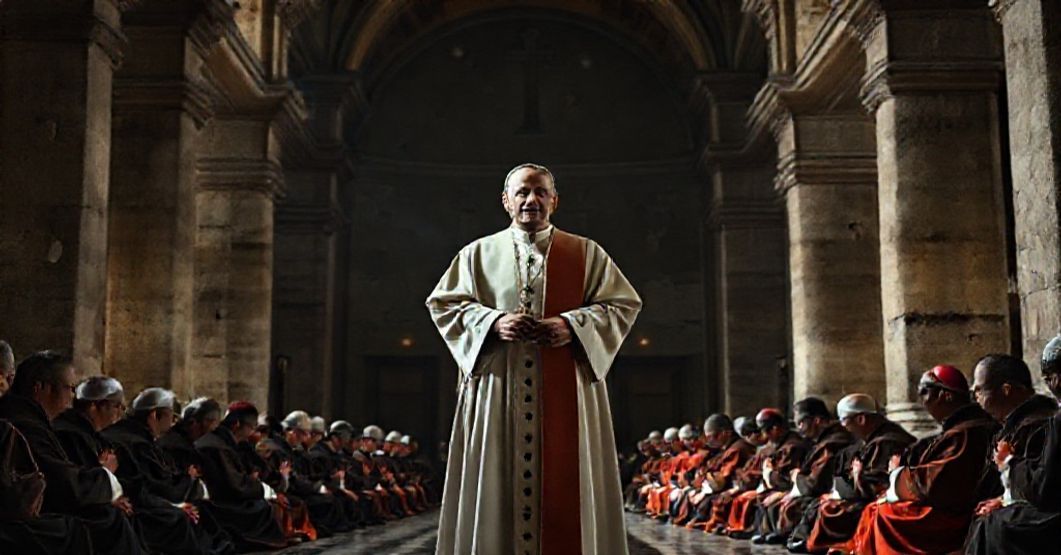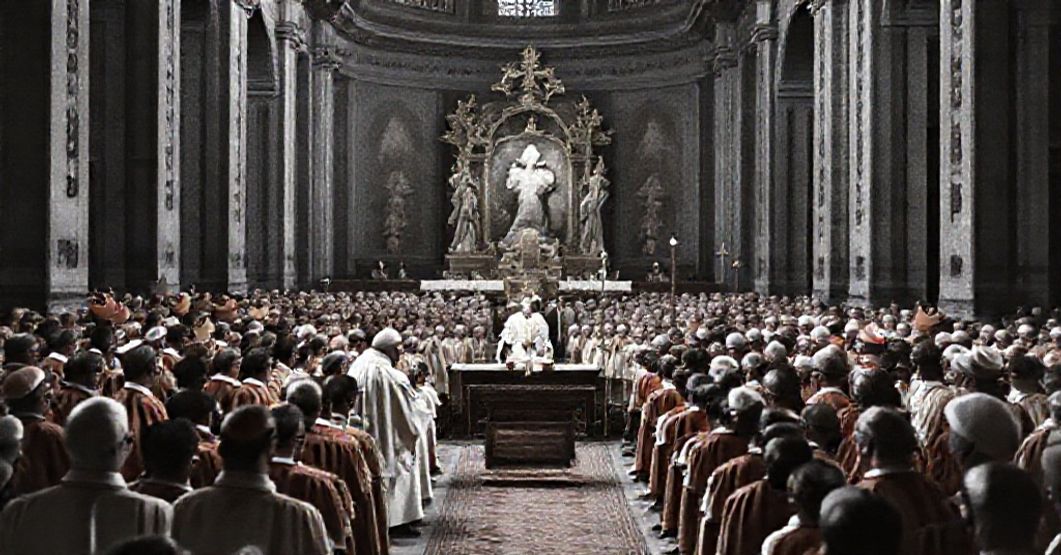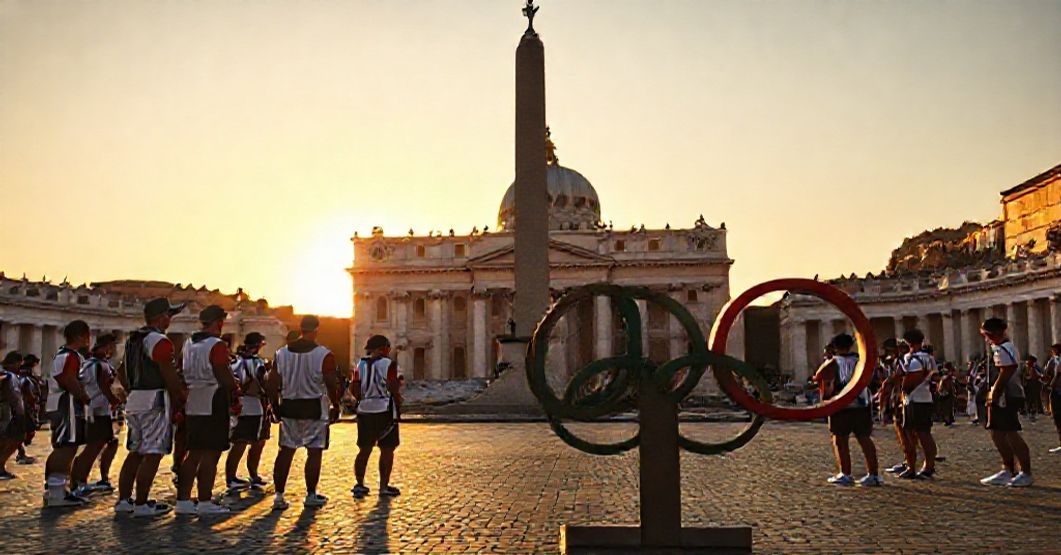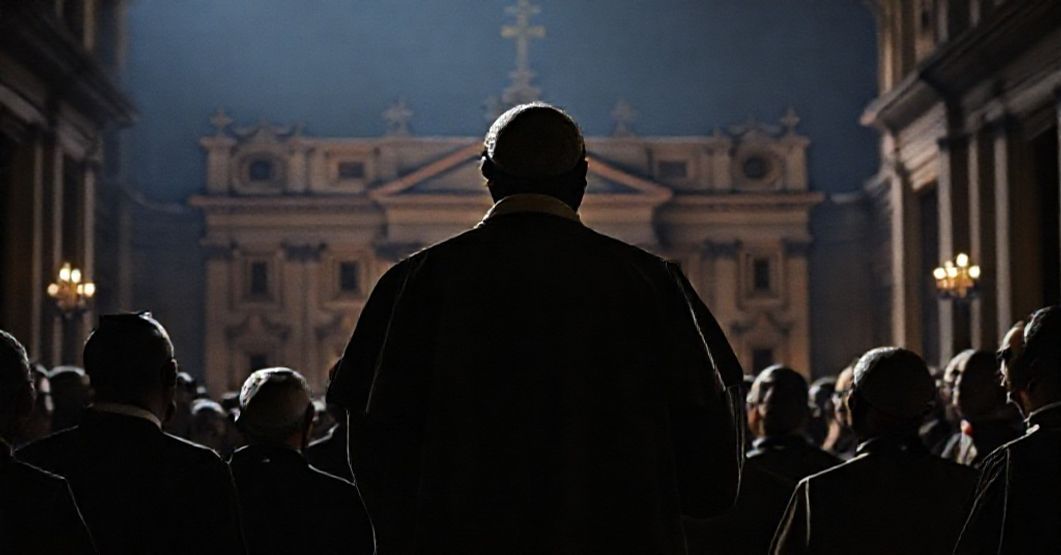Antipopes of the Antichurch



















Timeline of this heretical pontiff
Encyclical Letters
+ 15 posts1959
+ 7 posts1961
+ 4 posts1962
+ 2 posts1963
+ 2 postsApostolic Exhortations
+ 3 postsApostolic Constitutions
+ 93 posts1958
+ 6 posts1959
+ 87 postsMotu Proprio
+ 15 posts1958
+ 1 posts1959
+ 1 posts1962
+ 11 postsApostolic Letters
+ 151 posts1958
+ 4 posts1959
+ 63 posts1960
+ 78 posts1961
+ 1 posts1962
+ 4 posts1963
+ 1 postsSpeeches
+ 99 posts1958
+ 2 posts1959
+ 26 posts1960
+ 29 posts1961
+ 16 posts1962
+ 24 postsMessages
+ 6 posts1959
+ 4 postsHomilies
+ 4 postsLetters
+ 152 posts1958
+ 1 posts1959
+ 48 posts1960
+ 32 posts1961
+ 31 posts1962
+ 30 posts1963
+ 10 postsNot categorized
+ 1 posts1958
+ 1 postsNews feed


LA CONSISTORIUM SECRETUM ALLOCUTIO IOANNIS XXIII (1960.03.28)
At this secret consistory allocution of 28 March 1960, Angelo Roncalli (“John XXIII”) extols the Roman Curia, laments persecutions (notably recalling Alojzije Stepinac), praises the recently concluded Roman diocesan synod, announces new members of the College of “Cardinals” from various continents as a sign of geographic expansion, and links this internationalization of the Sacred College to the coming “Second Vatican Ecumenical Council,” presented as an instrument to respond to contemporary needs, foster unity, and promote peace among nations. The whole discourse is framed as serene optimism in the face of global tensions and culminates in the creation and publication of several “cardinals,” including Laurian Rugambwa, as emblematic of a universal, inclusive Church.
This apparently pious and orderly allocution is in reality a programmatic manifesto of conciliar revolution, naturalistic optimism, and ecclesiological subversion, preparing the paramasonic neo-church that will eclipse the visible structures of the true Catholic Church.


La Sacrum Consistorium (1960.05.30)
The text presents a semi-public consistory of 30 May 1960 under John XXIII, convened to receive the cardinals’ and bishops’ final opinions on the proposed canonization of “Blessed” John de Ribera, Patriarch of Antioch and Archbishop of Valencia. John XXIII recalls previous stages of the cause, cites alleged “many and undoubted signs of eminent virtue” and “wondrous works above the order of nature,” notes the unanimous favorable judgments, and announces his decision to inscribe John de Ribera into the catalogue of the saints on Trinity Sunday, 12 June 1960, in St. Peter’s Basilica, exhorting prayer that this decree be for God’s glory and the utility of the Christian people. This short text, though outwardly solemn and pious, is a concentrated manifestation of the new, usurping cultic authority that presumes to fabricate “saints” without any guarantee of divine truth and thus prepares the way for the conciliar revolution.


Allocutio Ioannis XXIII ad athletas (1960.08.24)
In this address of 24 August 1960, John XXIII welcomes Olympic athletes gathered in Rome, evokes the martyrdom of St. Peter near the Vatican obelisk, praises physical exercise and noble competition, commends the educational value of sport (health, discipline, self-denial), and briefly alludes to Rome’s providential role as center of empire and then of Christianity, concluding with a generic blessing. The entire text politely flatters a global athletic assembly while carefully avoiding any mention of the necessity of the true faith, of the One, Holy, Catholic, Apostolic Church as the unique ark of salvation, of sin, judgment, hell, the Cross, the Most Holy Sacrifice, or the Social Kingship of Our Lord Jesus Christ—the silence itself betrays the spirit of the conciliar revolution more clearly than many subsequent manifestos.


Allocutio Ioannis XXIII ad Commissiones Præparatorias (1960.11.14)
John XXIII’s 14 November 1960 allocution in St Peter’s Basilica addresses the members of the preparatory commissions for Vatican II. He invokes the history of ecumenical councils, praises the global enthusiasm for the announced council, contrasts earlier councils’ defensive, anti-heresy purpose with his own “pastoral” orientation, emphasizes optimism about the contemporary world, suggests that the task is not to define or defend particular doctrines but to give “new vigor and clarity” to Christian life, and frames the council as a luminous event for the whole world, including separated groups, pointing toward a hoped-for unity of all who bear Christ’s name. Hidden beneath this pious and scriptural vocabulary is the programmatic neutralization of dogma and the planned substitution of the Kingship of Christ and the authority of the Church with a conciliatory religion of humanity.
Varia
Announcement:
– News feed –implemented
– Antipopes separate web sites with their all documents refutation – in progress
